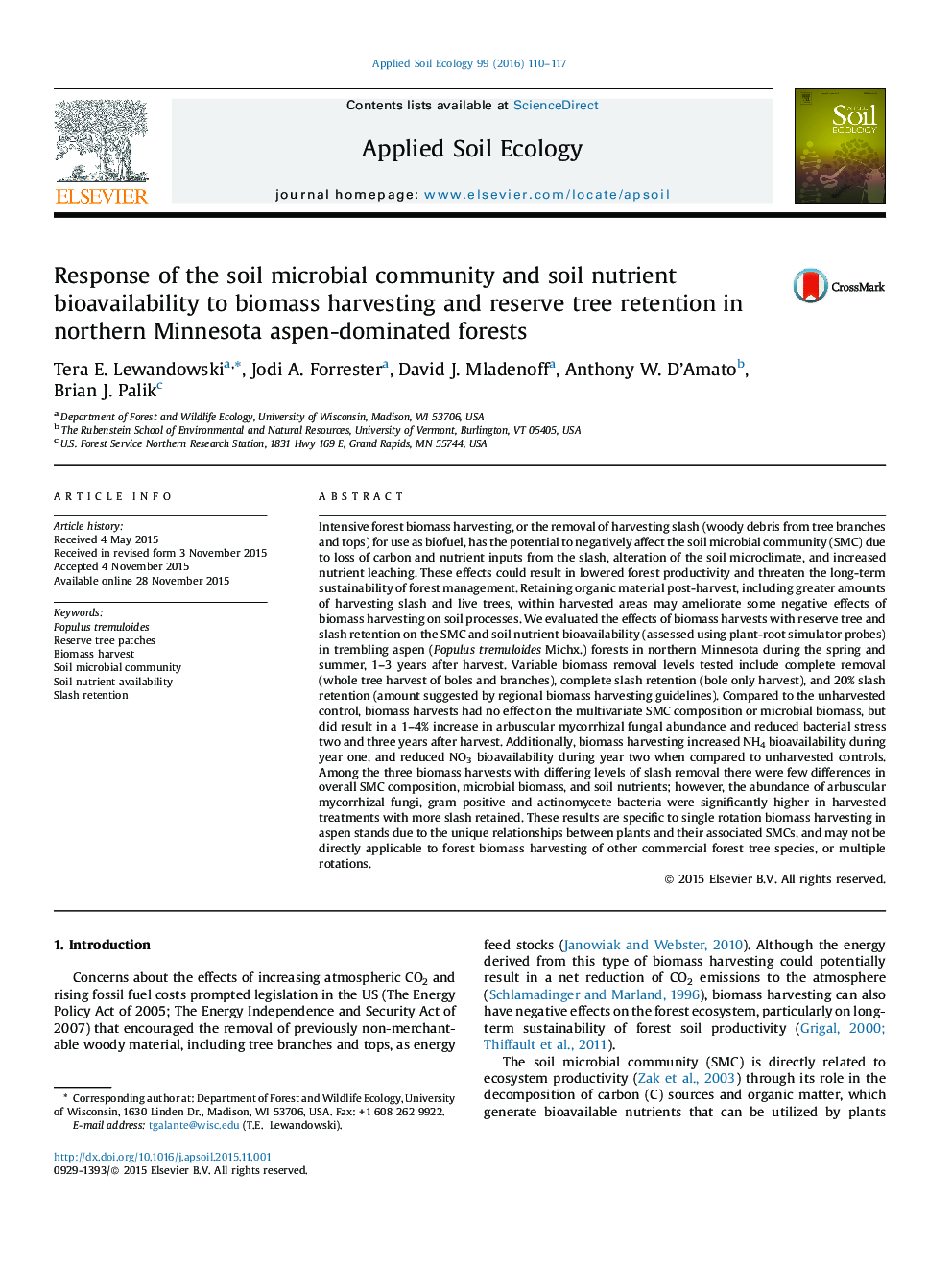| کد مقاله | کد نشریه | سال انتشار | مقاله انگلیسی | نسخه تمام متن |
|---|---|---|---|---|
| 4381844 | 1617784 | 2016 | 8 صفحه PDF | دانلود رایگان |
• Evaluated effects of biomass harvests on the soil microbial community and nutrients.
• Harvests increased mycorrhizal fungi and reduced bacterial stress in years 2–3.
• Harvesting increased NH4 and reduced NO3 bioavailability during years 1–2.
• Increasing slash retention increased AMF, gram positive and actinomycete abundance.
Intensive forest biomass harvesting, or the removal of harvesting slash (woody debris from tree branches and tops) for use as biofuel, has the potential to negatively affect the soil microbial community (SMC) due to loss of carbon and nutrient inputs from the slash, alteration of the soil microclimate, and increased nutrient leaching. These effects could result in lowered forest productivity and threaten the long-term sustainability of forest management. Retaining organic material post-harvest, including greater amounts of harvesting slash and live trees, within harvested areas may ameliorate some negative effects of biomass harvesting on soil processes. We evaluated the effects of biomass harvests with reserve tree and slash retention on the SMC and soil nutrient bioavailability (assessed using plant-root simulator probes) in trembling aspen (Populus tremuloides Michx.) forests in northern Minnesota during the spring and summer, 1–3 years after harvest. Variable biomass removal levels tested include complete removal (whole tree harvest of boles and branches), complete slash retention (bole only harvest), and 20% slash retention (amount suggested by regional biomass harvesting guidelines). Compared to the unharvested control, biomass harvests had no effect on the multivariate SMC composition or microbial biomass, but did result in a 1–4% increase in arbuscular mycorrhizal fungal abundance and reduced bacterial stress two and three years after harvest. Additionally, biomass harvesting increased NH4 bioavailability during year one, and reduced NO3 bioavailability during year two when compared to unharvested controls. Among the three biomass harvests with differing levels of slash removal there were few differences in overall SMC composition, microbial biomass, and soil nutrients; however, the abundance of arbuscular mycorrhizal fungi, gram positive and actinomycete bacteria were significantly higher in harvested treatments with more slash retained. These results are specific to single rotation biomass harvesting in aspen stands due to the unique relationships between plants and their associated SMCs, and may not be directly applicable to forest biomass harvesting of other commercial forest tree species, or multiple rotations.
Journal: Applied Soil Ecology - Volume 99, March 2016, Pages 110–117
